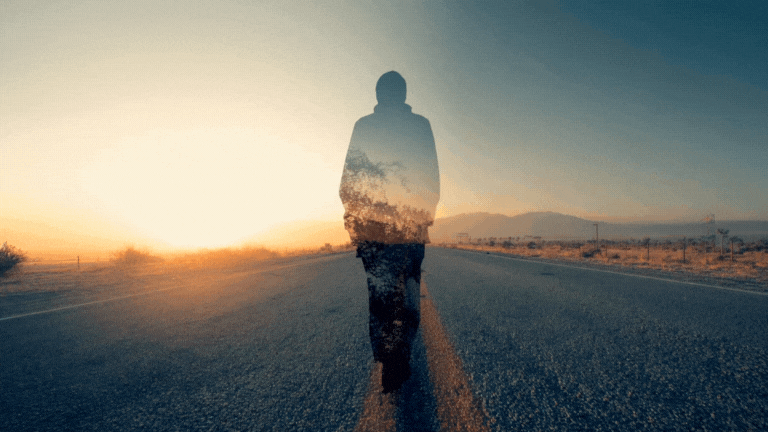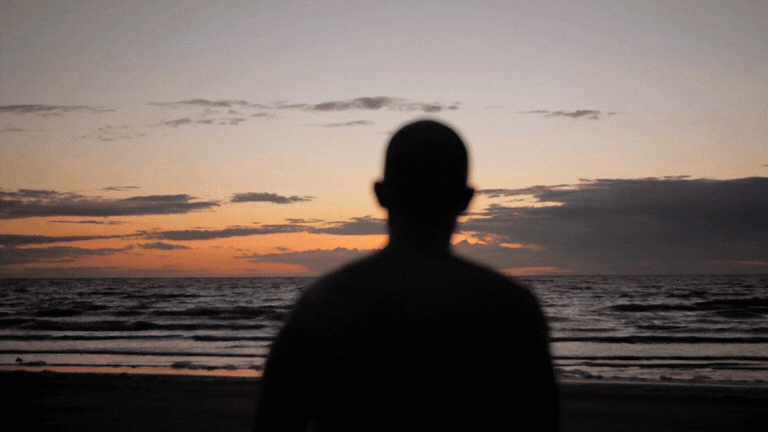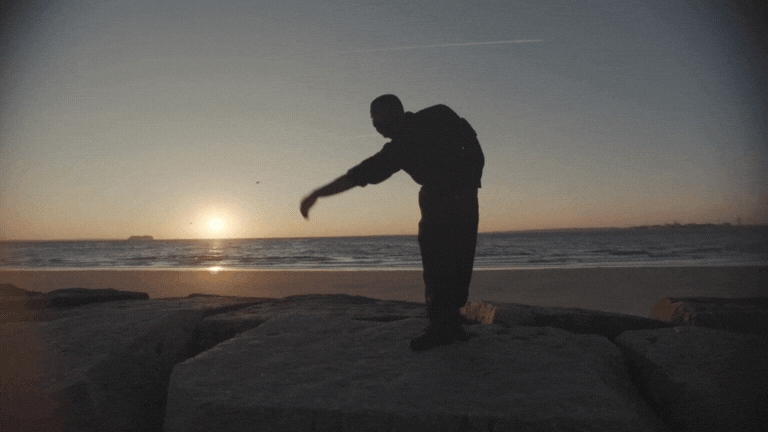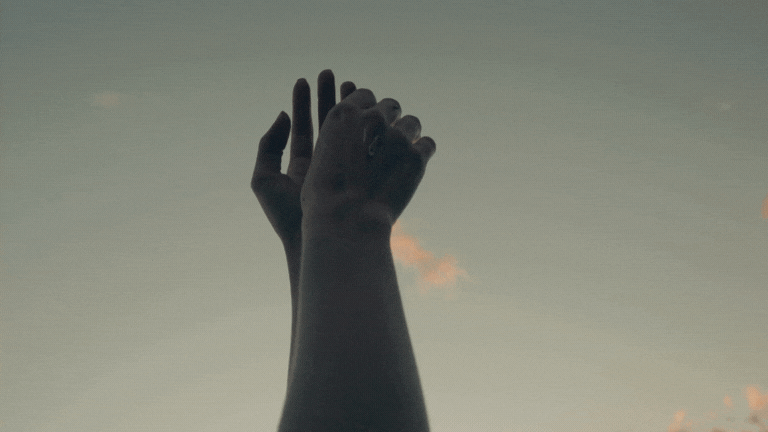002: The Mugshot and the Mirror
EDITION: October 2025
ESTIMATED READING TIME: 8 minutes
TL; DR: Short on time? Here’s the 60 second breakdown.
FIELD NOTE: 002
I.
There’s a photo of Desmond Bryant that’s been seen by millions.
It’s not his headshot from Harvard.
Not the one from NFL draft day.
Not even the image of him signing a five-year, $34 million contract with the Cleveland Browns.
It’s his mugshot.
February 24, 2013. His tongue out, eyes glassy. A single frame taken in a moment he barely remembers—one that would be turned into memes, jokes, and a Jimmy Kimmel skit replicated by celebrities ranging from Gordon Ramsay to Kevin Hart.
A few days after the mugshot, the Browns still signed him. The contract held. And life went on.
But some part of him didn’t.
Underneath the surface, something was already rupturing.
In his first Future Intelligence session—more than a decade later—he admitted, “That mugshot was just one night. But there were so many nights that were worse.”
Not louder. Not more public.
Just…worse.
II. A Culture of Disposability
Desmond didn’t realize how deeply he was hurting when the mugshot went viral. He realized much later, after he sustained an injury just before training camp.
The injury happened away from a Browns facility, and the team exercised a technicality that allowed them to void the remainder of his contract in one fell swoop.
Millions disappeared overnight. An identity he and his family had invested so much in, gone. A career, at its end.
Social psychologists say for men in particular, being deemed disposable cuts deeper than the shame of being seen at their absolute worst. It erodes the foundation of selfhood. This is called “precarious manhood”—the idea that men are taught to equate their worth with their usefulness. Manhood is a status to be proved and protected, not a state of being.
Here lies the great irony: We live in a world that overlooks deep dysfunction if the body or mind still produces (public indiscretion: signed contract)—but punishes the moment it breaks (torn pectoral: nulled contract).
In a world that loves fanfare and cheer, we really do not know what to do with pain when it isn’t poetic. We don’t know how to hold collapse when it isn’t inspiring.
III. Beyond the Spiral
Desmond had already been to therapy. He’d begun to unpack his trauma. But therapy alone couldn’t reach the depth of what he was contending with, because this wasn’t just about the past.
He was asking different questions:
Who am I if I am no longer performing that kind of usefulness?
What lives in me that is still sacred?
And what part of me deserves to exist… even when I am no longer a warrior on the field?
He didn’t just want to understand why he was hurting, he was asking what poet Wiliam Stafford poses: Ask me whether what I have done is my life?
But most importantly, he was circling what author Parker Palmer writes:
“The life I am living is not the same as the life that wants to live in me. I sometimes catch a glimpse of my true life, a life hidden like the river beneath the ice. And in the spirit of the poet, I wonder: What am I meant to do? Who am I meant to be?”
This is where our work begins. Not in pathology—but in possibility.
It’s the kind of work that doesn’t just ask, “What happened to you?”
It also asks, “What wants to emerge now that everything you built has burned down?”
IV. The Architecture of Becoming
Desmond’s personalized curriculum was called The Architecture of Becoming. Over four weeks, he engaged in four sessions with me, three with Jodi—our body recovery practitioner—and thirty days of AI-driven guided breathwork.
The modules he received were:
Reclaim the Fall – Not to sanitize or spin the descent, but to honor it. To feel it. To begin again from within it.
Architect the Inner World – To retrain the nervous system to recognize safety not as performance, but as presence.
Embody the Warrior – To release performative strength and allow wisdom to emerge from stillness, not control.
Become the Offering – To integrate his evolution in service of wholeness of self, not martyrdom to a career or a cause.
These weren’t conceptual theories. They were embodied teachings. The work did not ask him to be better, it asked him to be honest.
Parker Palmer says, “The soul is like a wild animal—tough, resilient, savvy, self-sufficient, and yet exceedingly shy. If we want to see a wild animal, the last thing we should do is to go crashing through the woods, shouting for the creature to come out. But if we are willing to walk quietly into the woods and sit silently for an hour or two at the base of a tree, the creature we are waiting for may well emerge, and out of the corner of an eye we will catch a glimpse of the precious wildness we seek.”
Similarly, as one week spilled into the next, something shifted in Desmond’s sessions. The space between his sentences widened.
His psyche began to speak.
By listening deeply, with reverence, we explored what happens after shame takes root. What collapses under the guilt. What it does to one’s sense of worthiness.
Do I deserve love? Do I deserve joy?
Or will I always live under a sense that I no longer get to be fully human? That I failed?
His turning point came after a session with Jodi.
“I thought I knew yoga,” he said. “Until I worked with her.”
Desmond owns a yoga studio. This wasn’t flattery. It was the awe of finally hearing what his body had been trying to say after years of pushing past physical limits.
Jodi was part of the trauma-sensitive yoga research team under Dr. Bessel van der Kolk—author of The Body Keeps the Score. She’s worked with veterans, Olympians, trauma survivors, and people whose stories have lived too long without language. She’s trained in yoga lineages it’d take a few paragraphs to explain.
Dr. Bessel once told her:
“Don’t worry about the science books. If they had the answer, there’d be no more trauma in the world. Let the body be the master in the room.”
And so, she does. She doesn’t ask people to use words or explain. She waits. She watches. And when the body is ready, she helps it remember what it was never meant to carry alone.
One of the most important insights Desmond arrived at was this: the mugshot represented a season of his life where he wanted to die. Not in a theatrical sense. In a very quiet, very real way.
The drinking. The drugs delivered to his home. The stillness on the couch that felt more like paralysis than rest. None of it was rebellion. It was resignation. It was self-punishment in slow motion.
He was winning in the eyes of the world—and unraveling in the privacy of his own body. Two truths. Coexisting.
And in that resignation, the world later mirrored back what he feared the most: that he was no longer needed. No longer valuable. No longer seen.
We didn’t try to fix that pain. We didn’t call it brokenness. We simply sat with it. We witnessed it—not as a flaw, but as a doorway.
And that witnessing made room for something quieter. A slow return to self-love.
Because when someone begins to feel safe in their own skin again, something shifts. The body softens. The system stops bracing for the next blow.
Desmond didn’t “overcome” his mugshot. He stayed with it. Long enough to hear what part of him had frozen there. Long enough to ask: What if the part of me I tried to outrun wasn’t shameful—but sacred?
That’s the shift.
And when someone chooses presence in a culture that rewards disappearance, that choice becomes archetypal.
V. The Return of the Self
There is a seed in California called the fire poppy. It only blooms after a wildfire. It lies dormant underground until fire scorches the surface—then, and only then, does it open.
Life can be like that.
Some experiences are like fire poppies. They carry a seed of wisdom that only opens in the heat of loss.
In Spiral Dynamics, human consciousness is seen not as fixed, but as evolving through layers of complexity. Desmond’s story isn’t about rising above, but deepening within—shifting from survival to integration, from domination to presence.
Because our consciousness is not just relegated to our triumphs or our failures.
A better way to understand ourselves is that our soul has its own curriculum. And as we lean in and truly listen to our lives, we begin to understand ourselves beyond ourselves. We begin to understand our place in the larger evolutionary consciousness of humanity.
And what a profound and inspiring awareness to have of one’s self.
Because the world doesn’t always offer return.
It cancels. It erases. It forgets.
But the soul does not forget.
That’s what Parker Palmer meant by the “birthright gift of self.” It’s not something we build. It’s something we remember. And remembering is not always triumphant. It’s often quiet. Slow. Strange.
Becoming whole is not the absence of pain. It is the presence of all of you—held, integrated, restored.
To be whole is to no longer exile the parts of yourself that once felt unlovable.
It is to remember that what looks like contradiction is often complexity. That what once felt like shame can become medicine. That your life, even in its undoing, is still yours to inhabit with reverence.
For Desmond, it meant stepping outside the only identity he’d ever been praised for—the strong one. The athlete. The “man.” And moving beyond to find someone deeper.
In his own words, Father, Lover, King.
This is not a story of being broken and put back together. It’s about finding that the sacred center—the part untouched by winning or losing—was there waiting for him all along.
And that—more than any performance of strength—is the real courage:
To name what has been buried.
To breathe into what was once exiled.
To trust that what is most human in us is not the problem, it’s our gift for being alive.
*This piece was shared with permission from Desmond, whose courage and transparency embody the kind of leadership we need more of.
MELISSA KIGUWA Future Intelligence Founder
Creator of the Future Intelligence™ curriculum—a 12-part inner training used by top decision-makers—Melissa pairs nervous-system retraining with interfaith spiritual practice. Training as a Spiritual Director with Unity Worldwide Ministries and holding a master’s from the London School of Economics, she helps public leaders unwind chronic tension and return to calm, decisive leadership.




